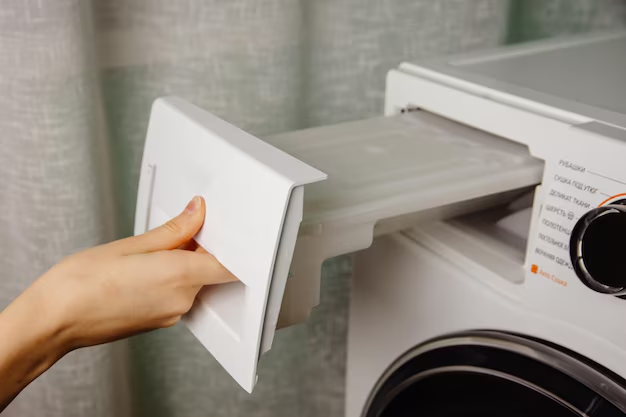Discovering the Filter in Your Samsung Refrigerator: A Complete Guide
Have you ever opened your refrigerator to get a glass of cold water, only to realize the water tastes a little off? If so, it might be time to replace your Samsung refrigerator’s water filter. However, one common question that arises is, where exactly is the filter located in a Samsung refrigerator? Uncovering the answer to this query is not just about finding it but understanding its significance, maintenance, and how to ensure your appliance continues to function optimally. Let’s dive into the useful world of Samsung refrigerator filters and explore everything you need to know.
What is the Role of a Refrigerator Water Filter? 🤔
Before locating the filter, it’s crucial to understand its role. A water filter in your refrigerator serves the important function of:
- Purifying your drinking water: It traps and reduces sediment, lead, mercury, chlorine taste, and even some pharmaceuticals.
- Protecting your ice maker and dispenser: It ensures that the water feeding these components is clean.
- Improving your health: Regular replacement maintains water quality and ensures your drinking water and ice are free from harmful pollutants.
Understanding the importance of this small component should provide motivation to keep it in good condition.
Finding the Filter in Different Samsung Refrigerators
1. French Door Models
In Samsung French Door refrigerators, the water filter is most often located:
- Inside the refrigerator, near the crisper drawers: It’s placed in a visible compartment that can be easily accessed by opening the doors.
- At the bottom of the refrigerator section: In some models, it might be hidden behind a push-button door.
2. Side-by-Side Models
For those with Side-by-Side models, you’ll usually find the filter:
- In the bottom, right interior: Open the fridge side, and look near the vegetable bins at the bottom.
- Behind a protective cover: A simple cover might need to be opened to reveal the filter.
3. Four-Door Models
These contemporary refrigerators often house their filters:
- Behind the service panel: Located inside the lower left portion of the fridge or behind the bottom-right shelf.
4. Built-in and Specialty Models
For specialty or built-in models, it’s best to refer to your owner's manual. However, common placements include:
- Behind the kick plate: Near the bottom front of the appliance.
- Behind an easy-access panel: Sometimes placed at the top corners.
Knowing your model type is key to quickly locating your filter without unnecessary hassle.
How to Replace Your Refrigerator Water Filter
Once you’ve found your water filter, the next step is understanding how to replace it. Replacing your water filter approximately every six months ensures steady performance and water quality.
Steps to Replace:
- Turn Off the Water Supply: Ensure safety by turning off the water to the refrigerator.
- Rotate the Used Filter Anti-clockwise: Twist the filter left to unlock it.
- Remove the Old Filter: Pull it out following the same rotational motion.
- Insert the New Filter: Align and gently push in the new filter, then twist clockwise until it’s firmly in place.
- Flush the System: Run about 2 to 3 gallons of water through the filter before use to clear any carbon residue.
📝 Pro Tip: Always consult your refrigerator’s manual or the Samsung website for model-specific instructions.
Signs You Need to Replace Your Refrigerator Water Filter
Here are some indications that your Samsung fridge’s water filter might need replacing:
- Water has an unpleasant odor or taste: This is a sign the filter is no longer effectively trapping contaminants.
- Decreased water flow: Water dispensers and ice makers might slow down when a filter becomes clogged.
- Filter light indicator is on: Many Samsung models feature an indicator light that alerts you to a needed replacement.
Choosing the Right Filter for Your Samsung Refrigerator
Not all filters are universal, so selecting the right one is crucial:
- Check Your Model Number: Locate your refrigerator’s model number, usually found on the inside wall or door.
- OEM vs. Compatible Filters: While original equipment manufacturer (OEM) filters ensure compatibility, some third-party options might be cheaper, though not always with a guarantee of quality.
- Evaluate Features: Look for features like NSF certification, which ensures the filter complies with industry standards for safety and performance.
Maintaining Your Samsung Refrigerator for Optimal Performance
Beyond the water filter, regular maintenance extends the life and efficiency of your appliance. Consider these maintenance tips:
- Clean the Coils: Vacuum or dust condenser coils every six months.
- Check Door Seals: Ensure integrity to keep cold air from escaping.
- Regular Cleaning: Clean shelves, baskets, and door bins periodically to avoid odors.
Summary: Key Takeaways for Samsung Refrigerator Owners 🌟
Here’s a handy checklist for managing your Samsung refrigerator’s water filter:
- Locate Your Filter: French door (near crisper), Side-by-Side (bottom right interior), Four-Door (lower left panel).
- Replace Regularly: Every six months or when water quality declines.
- Choose Wisely: Use model-specific OEM filters for best compatibility.
- Observe Performance: Monitor water taste, odor, and dispenser flow.
- Enhance Efficiency: Regular cleaning and maintenance prevent costly repairs.
The Path Forward in Refrigerator Maintenance
Knowing where your water filter is located and understanding its crucial role can significantly improve your refrigerator’s function and your water quality. By following the guidelines and tips provided here, you’ll enjoy the conveniences and health benefits of a well-maintained Samsung refrigerator. Whether you’re taking a sip of fresh water or using the ice maker for your evening refreshment, every part of the experience is enhanced when your appliances are cared for properly.
These insights not only answer the question you started with but also provide a broader view of effective Samsung refrigerator ownership. Happy cooling! 🧊
